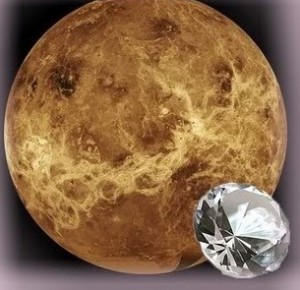It is certainly what you might call a gem of a discovery.
Astronomers believe they have an entire planet made of diamonds found.
Scientists at the University of Manchester believe they have a once-massive star in the Milky Way, which is transformed into a small planet made of precious stones excavated.
The international research team first detected an unusual star, called a pulsar, and followed their discovery in the study using a telescope is housed in an observatory in Cheshire.
The findings led scientists to the appeal of a small planetary companion orbiting the pulsar to be discovered.
Pulsars are small rotating stars more than ten miles in diameter – the size of a small town – that a beam of radio waves.
The team also includes scientists from Australia, Germany, Italy and the United States, believes that the ‘diamond planet’ is all that remains of the original star, most of which case was transferred to the pulsar.
The companion planet is small, with less than 40,000 miles wide – about five times the diameter of Earth.
But it’s so close to the pulsar, that if the greater would be torn apart by the gravity of the star, which more than 10,000 rotations per minute and has a mass about 1.4 times that of the Sun
Research team member Dr. Michael Keith said: “This remnant is probably largely carbon and oxygen, for a star made of lighter elements like hydrogen and helium would be too big to fit the measured time job. ”
The density means that this material is sure to be crystalline, ie, a large part of the star may be similar to a diamond.
The pulsar, called PSR J1719-1438, and his planet are part of the plane of the galaxy of stars and located 4,000 light-years away in the constellation Serpens – the Snake.
The modulations in the radio pulses astronomers said some things about the planet.
It revolves around the pulsar in just two hours and ten minutes, and the distance between two objects is about 373,000 miles – slightly less than the radius of our Sun
Despite its small size, the planet is slightly more massive than Jupiter.
About 70 percent of the millisecond pulsars have companions of a sort.
Astronomers believe that the companion star in its form, an old, dead pulsar transforms into a millisecond pulsar by the transfer of matter and spinning to a very high speed.
The result is a rapidly rotating millisecond pulsar with a shrunken companion – usually a white dwarf.
The find is reported in the journal Science.



